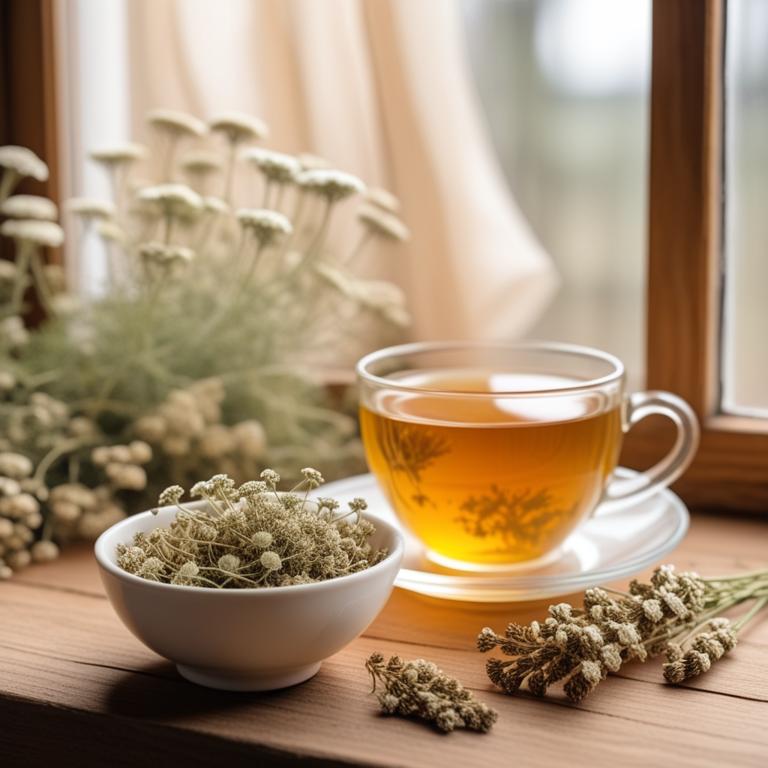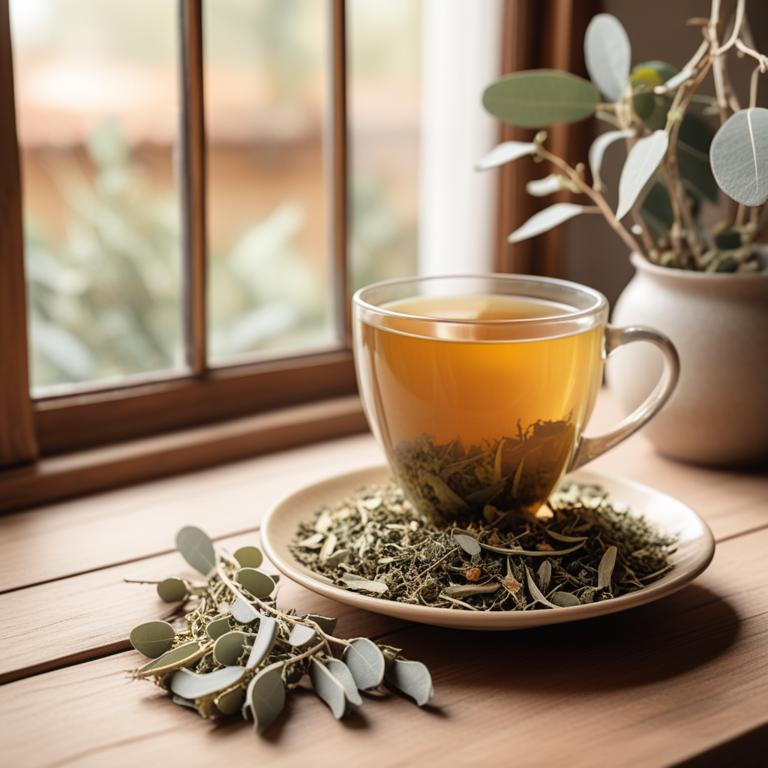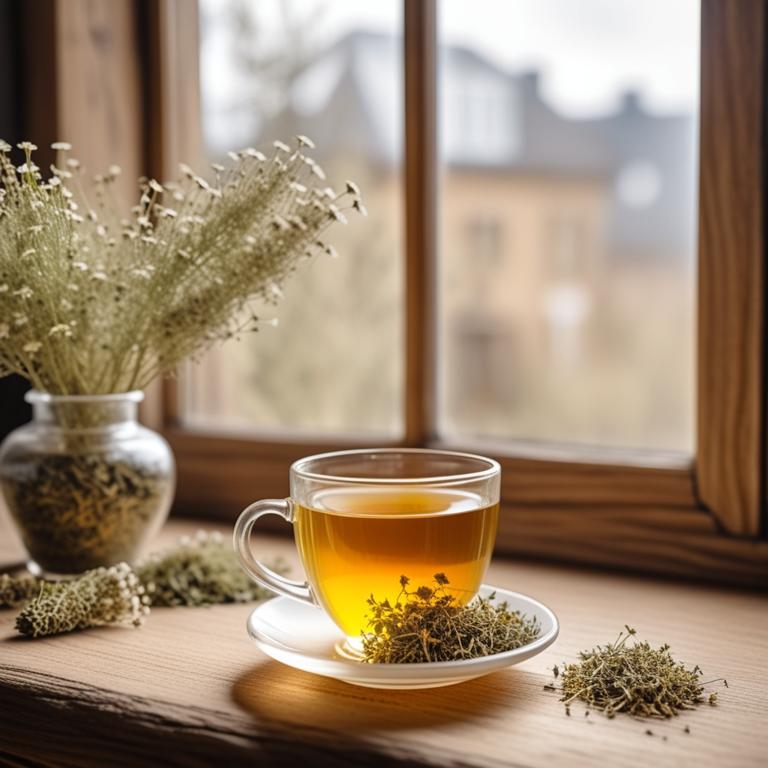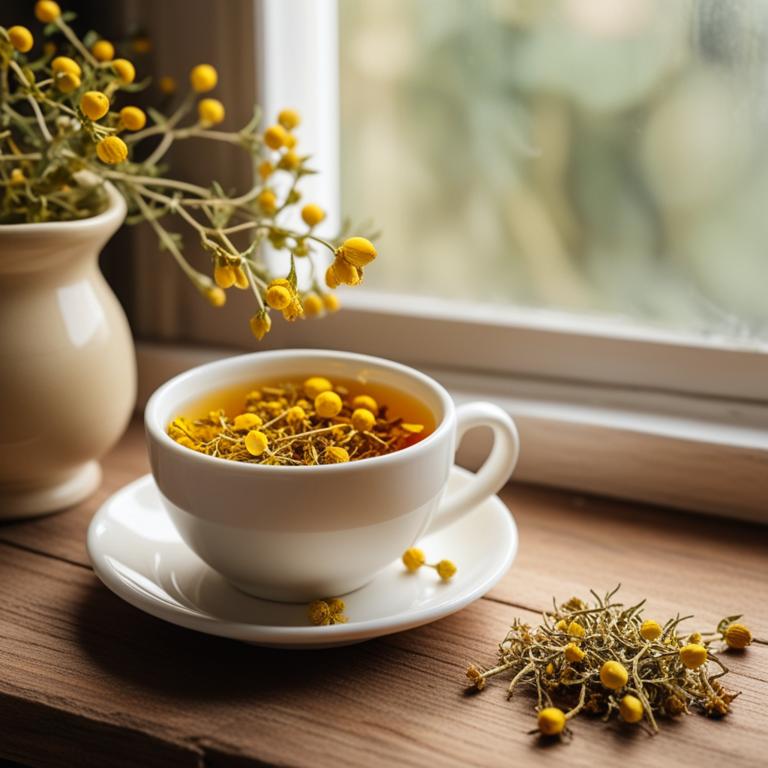7 Herbal Teas For Eye Infection

Herbal teas can be a great natural remedy for eye infections.
Some herbs, like Calendula officinalis, have anti-inflammatory properties that can help reduce swelling and ease discomfort around the eye. This is because the flavonoids and triterpenoids present in Calendula can block the production of prostaglandins, which cause pain and inflammation. Echinacea purpurea, another beneficial herb, has been shown to boost the immune system, helping to fight off the underlying infection. Its polysaccharides can stimulate the body's natural defenses, which can aid in the healing process. Eucalyptus globulus is known for its decongestant properties, which can help relieve congestion and discharge associated with eye infections.
The menthol in Eucalyptus can also help to open up airways and reduce the risk of further irritation. Drinking herbal teas can bring several benefits to your life. For one, they can provide a soothing and calming effect, helping to reduce stress and anxiety. Moreover, herbal teas are often caffeine-free, making them a great alternative to regular tea or coffee. When choosing an herbal tea for eye infections, it's essential to select a high-quality product that contains the right amount of herbs.
Look for a tea that has been made from fresh, organic herbs, and follow the recommended brewing instructions to get the most out of your tea.
- 1. Calendula officinalis
- 2. Echinacea purpurea
- 3. Eucalyptus globulus
- 4. Euphrasia officinalis
- 5. Hypericum perforatum
- 6. Melissa officinalis
- 7. Achillea millefolium
1. Calendula officinalis

Calendula officinalis teas contains triterpenoids, flavonoids, and saponins, which are bioactive compounds that contribute to its medicinal properties.
These compounds have anti-inflammatory and antimicrobial effects, making Calendula officinalis teas a potential treatment for eye infections. The saponins in the tea can help reduce swelling and fight bacterial infections, while the flavonoids can help combat oxidative stress and promote wound healing. The anti-inflammatory properties of triterpenoids can also help reduce redness and swelling in the affected area.
By using Calendula officinalis teas, you may be able to soothe and treat eye infections more effectively.
- Gather 1 cup of fresh Calendula officinalis flowers or 2 tablespoons of dried flowers.
- Heat 1 cup of water in a pot over low heat.
- Add the Calendula flowers to the water and let it steep for 5-7 minutes.
- Strain the tea into a cup and discard the flowers.
- Let the tea cool down and use it as an eye wash for infection. Repeat as needed, up to 3 times a day.
2. Echinacea purpurea

Echinacea purpurea teas contains bioactive constituents like alkylamides, glycoproteins, and polysaccharides.
These compounds have anti-inflammatory and immune-boosting properties that help combat eye infections, such as conjunctivitis. The polysaccharides, specifically arabinogalactan, stimulate the production of white blood cells, which fight off the infection. The glycoproteins, like echinacin, have antimicrobial properties that help reduce the growth of bacteria and other pathogens causing the infection.
By reducing inflammation and fighting off the infection, Echinacea purpurea teas can help alleviate symptoms and support the healing process of the eye.
- Gather 2 tablespoons of dried Echinacea purpurea flowers and 1 cup of boiling water.
- Pour the boiling water over the Echinacea flowers in a cup.
- Let the mixture steep for 5-7 minutes to allow the flavors to blend.
- Strain the tea into another cup using a fine-mesh sieve to remove the Echinacea flowers.
- Drink 1/2 cup of the Echinacea tea 3 times a day for eye infections, as needed.
3. Eucalyptus globulus

Eucalyptus globulus teas contains bioactive constituents like eucalyptol, limonene, and alpha-pinene.
These compounds have antimicrobial and anti-inflammatory properties that help fight off bacterial and viral infections in the eyes. Eucalyptol, in particular, is known to reduce inflammation and prevent the growth of certain bacteria that can cause eye infections. The tea's decongestant properties also help to reduce swelling and ease congestion in the sinuses, which can contribute to eye infections.
Drinking Eucalyptus globulus tea may help to soothe and calm the eyes, allowing them to heal more quickly and reducing the risk of complications.
- Gather 1 cup of water and 1 tablespoon of dried Eucalyptus globulus leaves.
- Heat the water in a pot and bring it to a boil.
- Remove the pot from heat and add the Eucalyptus globulus leaves.
- Let the mixture steep for 5-7 minutes, then strain it into a cup.
- Drink the tea 2-3 times a day to help soothe the eye infection.
4. Euphrasia officinalis

Euphrasia officinalis teas contains bioactive constituents like iridoid glycosides, flavonoids, and phenolic acids.
These compounds have anti-inflammatory and antimicrobial properties, which help to combat infections and reduce swelling in the eyes. The flavonoids, in particular, have antioxidant effects that protect the delicate tissues of the eyes from damage caused by free radicals. The iridoid glycosides also exhibit antiviral properties, which help to fight off viral infections that can cause eye problems.
By reducing inflammation and fighting off infections, Euphrasia officinalis teas can help to promote healing and alleviate symptoms of eye infections.
- Gather 1 cup of fresh Euphrasia officinalis leaves or 1 teaspoon of dried leaves.
- Measure 1 cup of boiling water and pour it over the Euphrasia officinalis leaves in a heat-resistant cup.
- Steep the mixture for 5-10 minutes, then strain it using a fine-mesh sieve or cheesecloth.
- Squeeze the leaves to get the remaining liquid and discard the leaves.
- Drink the tea 2-3 times a day to help alleviate eye infection symptoms. Store any leftover tea in the refrigerator and consume within 24 hours.
5. Hypericum perforatum

Hypericum perforatum teas contains hyperforin and hypericin, which are strong antioxidants that help reduce inflammation in the eyes.
These antioxidants also have antimicrobial properties, which can combat bacterial infections and promote healing in the affected area. The flavonoids present in Hypericum perforatum teas, such as quercetin and kaempferol, have anti-inflammatory properties that can reduce swelling and redness in the eyes. The tea's antiseptic properties can also help prevent the spread of infection and promote a healthy environment for the eyes to heal.
The combination of these properties in Hypericum perforatum teas makes it a potential remedy for eye infections.
- Gather 1 cup of boiling water and 1 teaspoon of dried Hypericum perforatum flowers.
- Steep the dried flowers in the boiling water for 5-7 minutes, then strain.
- Add 1 teaspoon of honey to the tea for taste, if needed.
- Drink 1/2 cup of the tea, 2-3 times a day, to help reduce eye infection symptoms.
- Consult a doctor before using Hypericum perforatum tea, especially if you're pregnant, breastfeeding, or taking medications.
6. Melissa officinalis

Melissa officinalis teas contains rosmarinic acid, a powerful antioxidant that helps to reduce inflammation and fight off bacterial infections.
The anti-inflammatory properties of rosmarinic acid make it an effective treatment for eye infections, such as conjunctivitis. Melissa officinalis also contains flavonoids, particularly apigenin and luteolin, which have antimicrobial properties that help to prevent the growth of bacteria and other microorganisms that can cause eye infections. The antiseptic properties of Melissa officinalis tea also help to soothe and calm irritated eyes, reducing redness and swelling.
By using Melissa officinalis tea to treat eye infections, you can help to promote healing and prevent further complications.
- Gather 1 cup of fresh Melissa officinalis leaves or 1 teaspoon of dried leaves.
- Heat 1 cup of water in a pot and bring it to a boil.
- Remove the pot from heat and add the Melissa officinalis leaves.
- Steep the mixture for 5-7 minutes, then strain it using a tea strainer or cheesecloth.
- Drink 1/2 cup of the tea 2-3 times a day, or as directed by a healthcare professional.
7. Achillea millefolium

Achillea millefolium teas contains sesquiterpene lactones, particularly achillin and alantolactone, which have antimicrobial properties.
These compounds help to reduce the growth of bacteria and fungi that can cause eye infections. The tea also contains flavonoids, like kaempferol and quercetin, which have anti-inflammatory properties that can help to soothe and calm irritated eyes. The sesquiterpene lactones in the tea can also help to reduce swelling and promote the healing process.
By reducing bacterial and fungal growth, and promoting healing, Achillea millefolium teas can be a useful treatment for eye infections.
- Gather 1 cup of fresh Achillea millefolium leaves and flowers.
- Chop the leaves and flowers into small pieces.
- Measure 1 tablespoon of chopped leaves and flowers. Place them in a clean tea infuser.
- Pour 1 cup of boiling water over the leaves and flowers in the tea infuser.
- Let the tea steep for 5-7 minutes. Strain and drink 2-3 cups a day for eye infection relief.